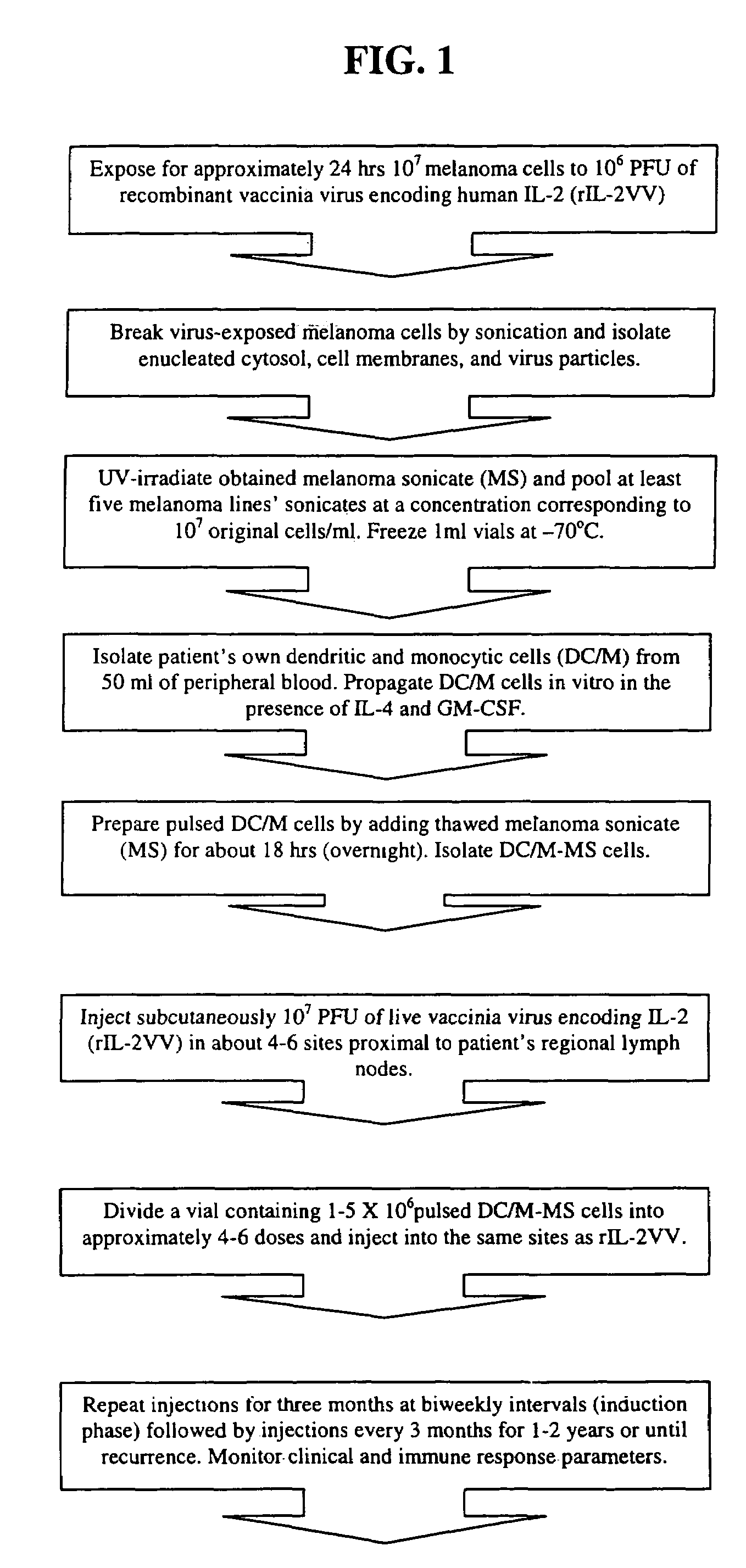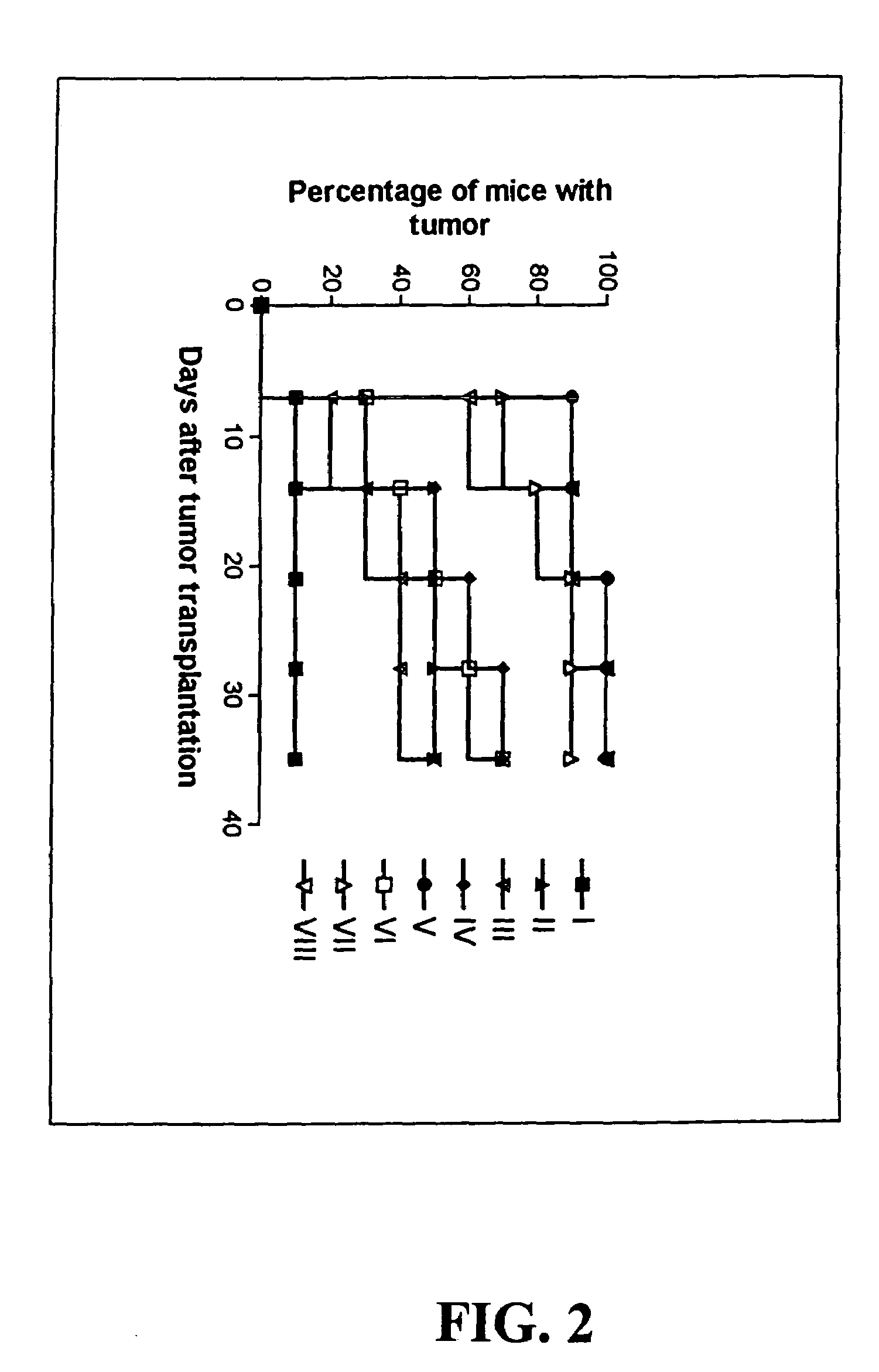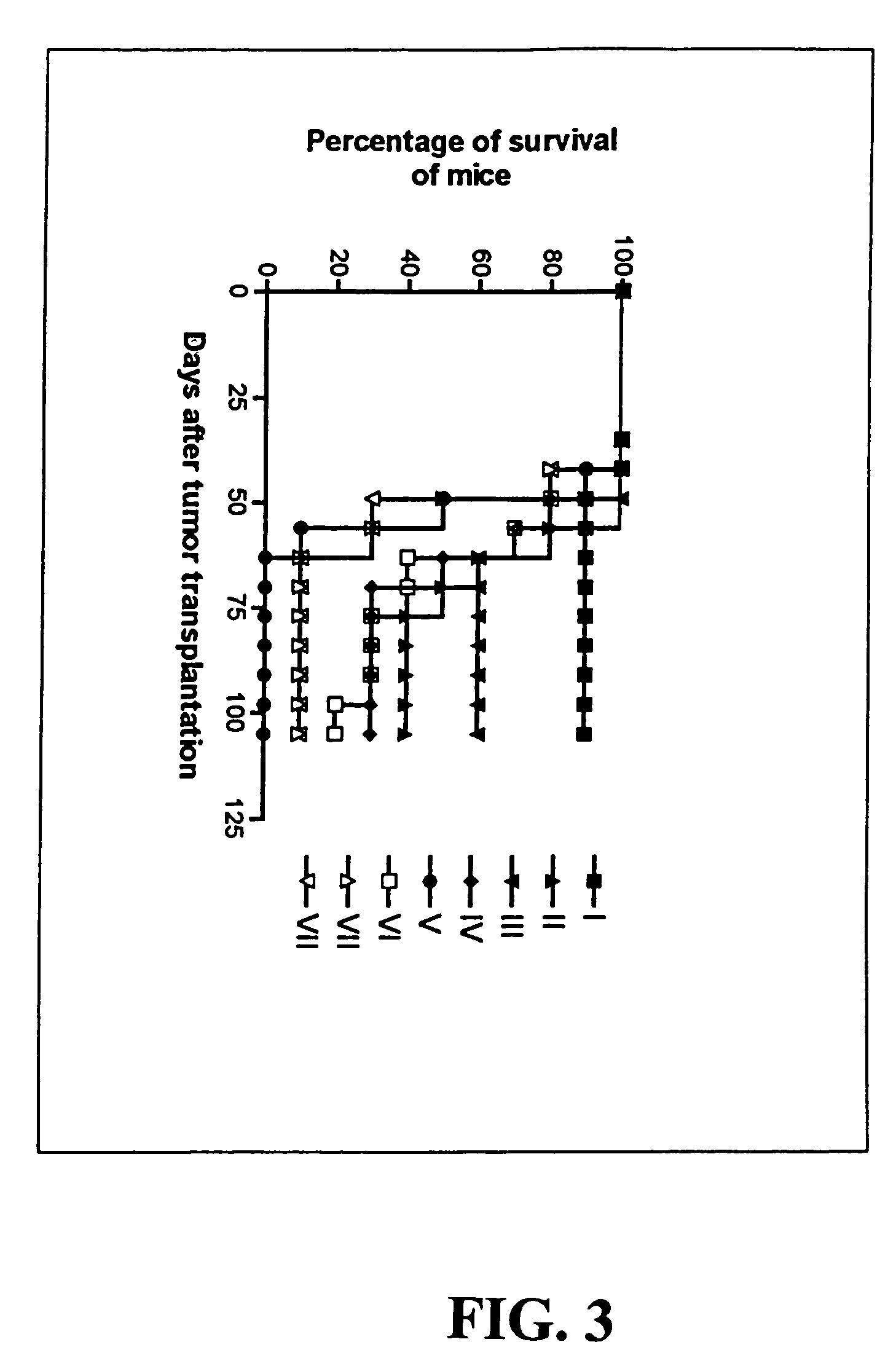Melanoma vaccine and methods of making and using same
a technology for melanoma and vaccines, applied in the field of cancer vaccines, can solve the problems of increasing the overall survival, not producing significant benefits for melanoma patients, and none of the methods so far have been entirely satisfactory
- Summary
- Abstract
- Description
- Claims
- Application Information
AI Technical Summary
Problems solved by technology
Method used
Image
Examples
example i
Preparation and Testing of a Prototype CVACII Vaccine in a Murine Model
Cell Lines
[0069]Murine colon cancer cell line CC-36, human fibroblast cell line MRC5, monkey kidney cell line VERO, NK sensitive cell line YAC-1, murine anti-CD4 antibody secreting cell line GK1.5, murine anti-CD8 secreting cell line TIB210-2.43, IL-2 dependent cell line CTLL, thymidine kinase negative cell line 143B were obtained from ATCC and maintained in either EMEM or RPMI media with appropriate nutrients.
Mice
[0070]Balb / C mice of 4–6 weeks old were used in all the therapeutic cancer vaccine experiments, and for the isolation of dendritic cells, and for the preparation of anti-CD4 or anti-CD8 monoclonal antibody-containing ascites.
Vaccinia Virus (VV)
[0071]A recombinant vaccinia virus (rVV) was prepared with a complete Escherichia coli β-galactosidase gene (lacZ) and another rVV having the human IL-2 gene (rIL-2VV) inserted into the same locus as the lacZ gene of rVV. These viruses were expanded in either MRC5...
example 2
Preparation and Clinical Testing of CVACII Melanoma Vaccine in Humans
Preparation and Administration of CVACII
[0087]Preparation and administration of CVACII to cancer patients involves the following steps: Preparation of clinical grade recombinant vaccinia virus encoding human interleukin-2 (rIL-2VV); Preparation of clinical grade melanoma cell lines derived from humans with metastatic melanoma; Incubation of rIL-2VV with melanoma cells for a sufficient period of time; Disruption of the melanoma cells by sonication and isolation of vaccinia virus, enucleated cytosol and cell membranes; Irradiation of the melanoma sonicate (MS) by UV in order to inactivate the virus; Preparation of dendritic / monocytic cells (DC / M) preferably from patient's own blood; Pulsing DC / M with melanoma sonicate to obtain a DC / M-MS preparation; Vaccinating a patient, first with rIL-2VV and then with the DC / M-MS preparation, preferably subcutaneously and preferably at the sites near regional lymph nodes.
Method o...
PUM
| Property | Measurement | Unit |
|---|---|---|
| volume | aaaaa | aaaaa |
| duration time | aaaaa | aaaaa |
| duration time | aaaaa | aaaaa |
Abstract
Description
Claims
Application Information
 Login to View More
Login to View More - R&D
- Intellectual Property
- Life Sciences
- Materials
- Tech Scout
- Unparalleled Data Quality
- Higher Quality Content
- 60% Fewer Hallucinations
Browse by: Latest US Patents, China's latest patents, Technical Efficacy Thesaurus, Application Domain, Technology Topic, Popular Technical Reports.
© 2025 PatSnap. All rights reserved.Legal|Privacy policy|Modern Slavery Act Transparency Statement|Sitemap|About US| Contact US: help@patsnap.com



